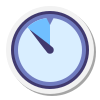The lone worker App, how it works?
The lone worker app Beepiz ensures the lone workers safety by guaranteeing that emergencies will be contacted in case of an accident.
As a monitor, you are aware of everything: from the triggering of an alert to its closure with the victim support.
But in concrete terms, how does it work?
Subtitles available in different languages
What are the roles : lone worker, monitor, HSE direction ?
The lone worker
A lone worker is someone who works by himself without close or direct supervision and cannot be rescued quickly. He has the Beepiz app on his smartphone, that he carries with him while working.
The watchman
Monitors are those who receive and deal with the alerts. It can be, for example a EHS officer, a QSE manager, a team leader etc. With Beepiz, you can have different monitors.
The supervisor
Thanks to his access to the management portal, the supervisor can manage all the Beepiz apps, associate licences to workers, set up the sensitivity of the alerts or have access to different reports.
How does lone worker app work?

The employee starts the protection
At the beginning of each lone working session, the employee activates the Beepiz app for his protection. (Example) Franck is a lone worker. When he starts his work day, his first reflex is to launch the Beepiz app to ensure his protection.
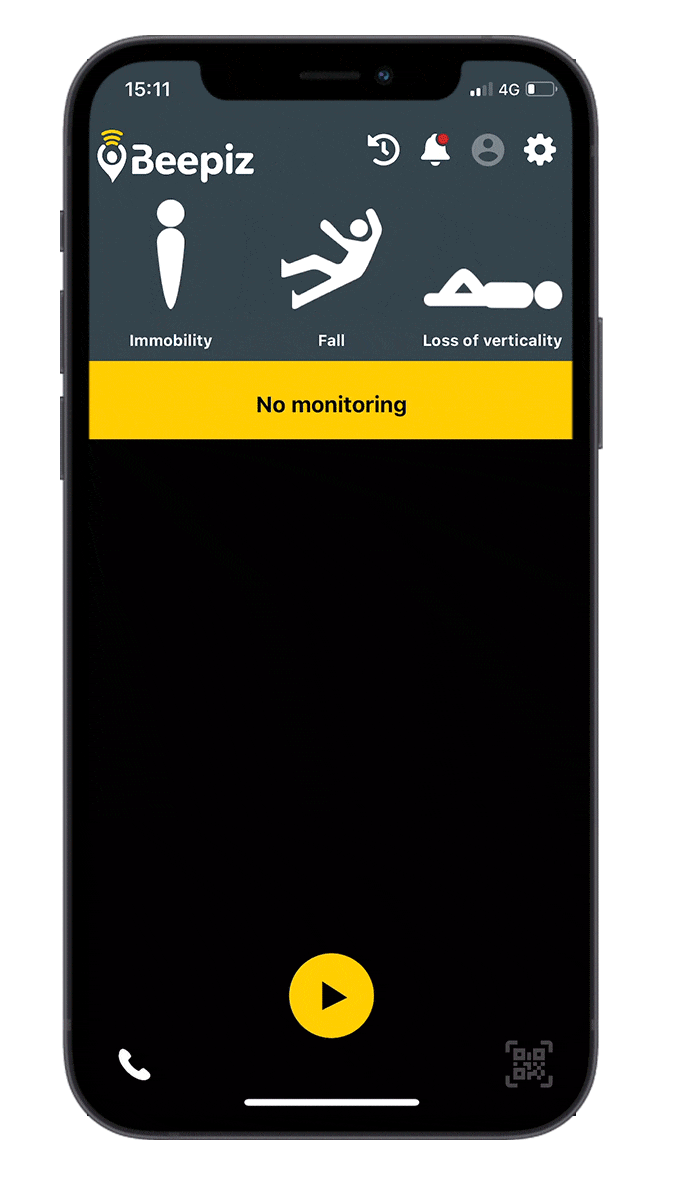

An alert is triggered
In case of a problem for the protected employee, an alert is triggered. It can be an automatic detection (fall, immobility, ...) or a manually triggered alert (SOS alert or attack alert). (Example) After a while, Franck starts to feel ill and faints. The Beepiz app automatically detects the loss of verticality and sends an alert.
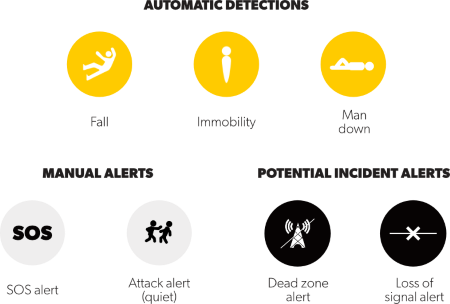

The alert is sent
If you have chosen to manage alerts internally, you can set up to 10 watchmen who will receive alerts via the channels of your choice. If you wish, you can also choose to let an alarm receiving center deal with your alerts (remote assistance). (Example) Franck's team leader, the QSE manager and the first-aid worker are the 3 monitors set up as alert receivers. They receive the detailed alert.
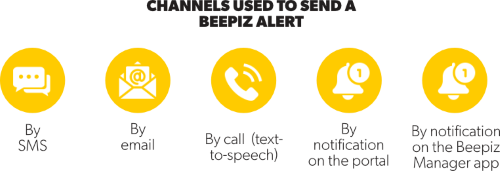

The detailed alert makes you save time
The detailed alert includes all the information needed for a quick rescue: type of alert, user identity, GPS position and even indoor location. All the watchmen receive the alert simultaneously and can discuss in the dedicated space integrated in the detailed alert. But first of all, an alarm verification must be done. (Example) The team leader tries to reach Franck to check his health. Unfortunately, he is unconscious and doesn't answer despite the automatic pick-up. The team leader tells the two other watchmen in the chat room, and the first-aid worker who is nearby decides to come help him.
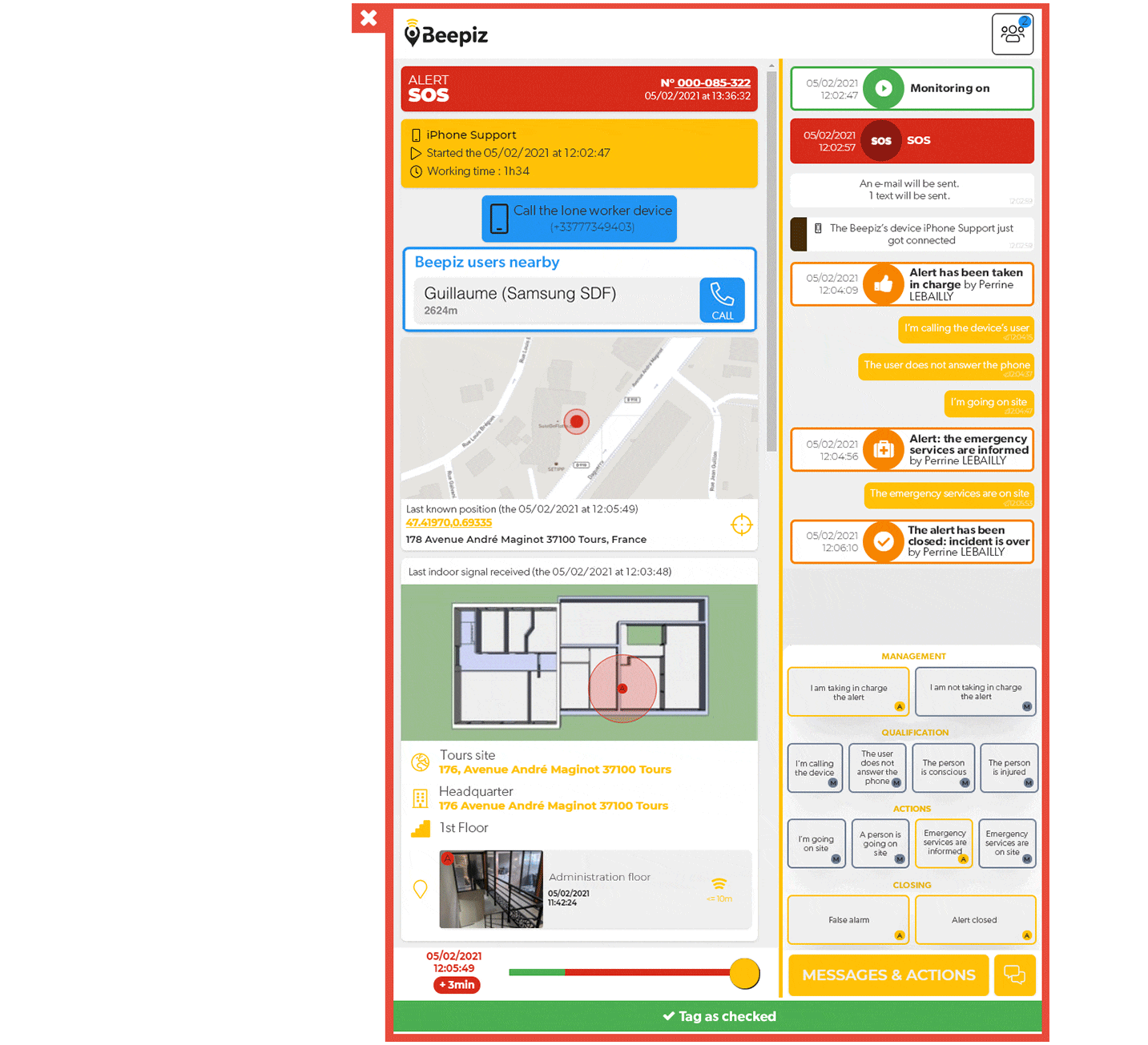

It's already done!
The employee has been rescued and the alert can be closed. (Example) Once on site, the first-aid worker tells the other watchmen that the situation is under control and that the accident victim is being taken care of. Thanks to this quick intervention, Franck won't suffer any after-effects!

The Beepiz app for the lone worker

The Beepiz app for the lone worker is simple and intuitive, it is available on the two most famous operating systems: Android and iOS. So, whether you have a Samsung, Crosscall, Apple or Huawei phone, Beepiz will be compatible on your mobile fleet.
The management portal for supervision
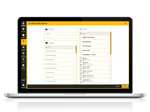 The management portal is a web portal accessible from any internet connection or digital tool. This space allows HSE coordinators, safety directors or managers to deploy and supervise the lone worker solution.
The management portal is a web portal accessible from any internet connection or digital tool. This space allows HSE coordinators, safety directors or managers to deploy and supervise the lone worker solution.
Beepiz key elements:
A time saver
The intervention is simplified thanks to the multiple information gathered in the detailed alert. Moreover, the simultaneous transmission of the alert to the different monitors and their facilitated interactions allow even more efficiency.
Transparency
The needed information to take care of the accident victim is easily accessible for each person involved. The victim is informed in real time of the alert handling.
Reliability
The alert is sent through different channels to several recipients, so it is impossible to miss it! Also, potential incident alerts guarantee protection even in case of poor network coverage.
More questions about the way the Beepiz app works?
Are there any prerequisites to use Beepiz? 🤔
To use Beepiz, it is necessary to install the application on a smartphone that the worker must have with him (in his pocket, on his belt, etc.). This smartphone must also be connected to the Internet: either through a SIM card (optimal solution) or through WiFi (but this does not ensure the proper functioning of all Beepiz features).
With which smartphones is the Beepiz app compatible? 📱
Our lone worker app is compatible with all iPhones and Android smartphones certified Google Play (more than 95% of smartphones sold in France). To get more information about the compatibility of Beepiz with your smarpthone, check here our tested smartphones.
How does the application detects fall? ⚠️
Our R&D team has developed an algorithm that, thanks to various sensors in the phone, can detect falls, loss of verticality and immobility.
How to set up the app and alerts? ⚙️
From the management portal, the supervisor can set up the detections sensitivity and many other app settings, for one or several licences at once.
The lone worker can choose to inhibit an automatic detection directly from his app, for the duration of its choice.
What are the different types of alert? 🚨
Beepiz works with 7 different types of alerts:
- 3 automatic detections (fall, immobility, loss of verticality)
- 2 manual alerts (SOS alert and quiet attack alert)
- 2 potential incident alerts (dead zone and loss of signal alert) that allow you to anticipate the loss of monitoring.
Does the Beepiz app work in dead zones? 📶
When you know that you are going to do an intervention in an area that is not covered by the network, it is possible to set a working time in dead zone. If the worker does not return to a covered area at the end of this time, an alert is sent.
Moreover, if the worker does not set a time in a dead zone but is out of network for a too long period of time, a loss of signal alert is automatically sent.

